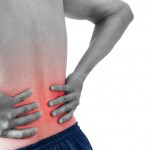“Avoid It, If There’s Pain”
Does This Pilates Maxim Do Our Clients More Harm Than Good?
by Marie Wittman
I am in the midst of relocating from California to Minnesota and part of this move has involved placing my clients in another trusted teacher’s hands. While I have gone through this process in the past, this was the first time I spent extra time reviewing my teaching approach with the teacher that is taking over for me. This was largely because many of my clients have chronic injuries and pain and they experienced significant leaps in healing and/or managing their conditions in the time we worked together. As I discussed my strategy with my successor, it became more apparent to me how much I had “strayed” from the common approach to pain in the Pilates field: to avoid the exercise (or movement) if there is pain.
My study of pain has not been extensive by any means, but my research into the body’s tissues has often involved some meandering into pain science. As a result, I see pain through a different lens now and it has changed how I structure lessons. While treatment of pain is beyond the scope of the Pilates instructor (unless one is also a licensed physical therapist, doctor, etc.), we certainly work with clients that are living with acute or chronic pain, so we can hardly ignore the matter. More precisely, it is valuable for us to have at least a basic understanding of current pain research so that we can make wiser choices in how we teach and when to refer the client to a specialist.
The topic of pain is way too complex to be properly addressed in this short article. What I have done below is to highlight a few points and then provide some suggested resources for you to use to explore further.
Pain is a multi-factorial experience.
While it might be nice to say authoritatively “your back pain is due to your poor posture,” the reality is that such a statement is false. Specialists researching back pain do not unequivocally say that poor posture is the cause of back pain. In fact, a lot of the research indicates that we do not really know what causes back pain. So, although in some instances it may be possible to make a direct correlation between some tissue damage (say a cut or a fracture) and pain, in many instances the pain a person experiences may have no clear relationship to tissue damage (at least within the context of what we currently know about the human organism). Current pain research suggests that pain stems from a combination of tissue damage (or the perception of a threat of tissue damage), proprioception, thought/beliefs, movement, emotion, and sensory signaling. And that each person’s experience of pain will be unique.
In practice: With this broader perspective of pain, I use different tactics with each client and their sessions are no longer limited to exercises that avoid the pain (or a painful area), but are an opportunity to guide a client in movement that investigates her/his experience of pain in a sphere of positivity.
Pain is a signal to motivate behavior, not a reflection of damage.
The current thinking is that the signal of pain is to motivate some response that will be protective. Pain is a signal from the brain outward, not a signal from an area of the body toward the brain. In other words, pain is an output signal, not an input signal. The brain is collating information from various “inputs,” such as nociception, proprioception, other sensory signals, emotions, and memories, and then, given all the assembled factors, a signal of pain may or may not be sent out.
In practice: Each time a client reports experiencing pain (inside or outside the studio), I now consider a range of factors to look into with my client. For example, with a client who has back pain, I may ask about the environment in which they experienced the pain, or dissect a worrisome movement to its basics to assess their proprioception of that area on their body. I encourage them to take stock of what they sense, of what they feel, and describe more fully their sensation of pain.
Pain is not an indication of a poor movement pattern or bad posture.
Sticking with my back pain example: a client comes into a studio with “poor posture” or who sits a lot, and her/his back pain will quickly be said to be caused by either of these two habits. However, the research shows that there is no significant correlation between pain and “poor” movement patterns or “bad” posture. I put these words in quotes to highlight that it is a subjective assessment that labels any movement pattern or posture as bad. The reality is that no one posture or movement is detrimental to our well-being; rather it is the frequency of being in one posture or habitually moving in one way plus the absence of a wide variety in our postures and movements that contributes to pain. And still it is just a contributing factor and not the sole cause. As I said above, there are many factors that come into play with pain.
In practice: When I notice a particular movement pattern or posture in a client, I find ways to incorporate other movement patterns in order to strengthen all ranges of motion in all joints.
As you can see these three points intersect and feed into each other, just as the various factors contributing to the experience of pain ebb and flow into each other. What the current research on pain science opens up for movement instructors is quite exciting, in my opinion, and I hope this brief review inspires you to think differently about pain and to do some further reading and perhaps training on the subject. As usual, I would love to hear your thoughts and if you have found any discussions on pain insightful, please share.
Resources:
- A great overview from one of my colleagues, while she teaches yoga, the info is applicable to Pilates as well.
- An excellent discussion from a physiotherapist’s perspective (I also wholeheartedly agree with his reframing of movement as sensitive instead of poor/bad/faulty)
- Todd Hargrove’s blog and book – both of which are worth perusing
 Marie Wittman is a Master Pilates Teacher, a Merciér Therapy Practitioner, and she holds a PhD in medical history from Queen Mary, University of London. She founded Art and Science of Balance as a platform for educating the public about aligned movement and for providing unique continuing education to Pilates instructors. She teaches and writes about all aspects of optimal health, but her speciality is movement and women’s reproductive health.
Marie Wittman is a Master Pilates Teacher, a Merciér Therapy Practitioner, and she holds a PhD in medical history from Queen Mary, University of London. She founded Art and Science of Balance as a platform for educating the public about aligned movement and for providing unique continuing education to Pilates instructors. She teaches and writes about all aspects of optimal health, but her speciality is movement and women’s reproductive health.
